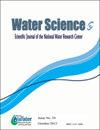Adjusting external calibration intervals for auxiliary devices in testing laboratories according to intermediate checks results
Q2 Environmental Science
引用次数: 0
Abstract
ABSTRACT An unfortunate thing which is not desirable to happen in testing laboratories is that after working for weeks on tests, it is discovered that one of the used equipment is not accurate. Therefore, intermediate checking these devices from time to time is a reasonable way to reduce the risk of errors in laboratory work. The Central Laboratory for Environmental Quality Monitoring (CLEQM) performs intermediate check for testing equipment, besides the annual calibration done by an accredited body, to maintain confidence in its accuracy and precision between calibration intervals. This paper discusses the laboratory procedures to perform intermediate checks for electronic balances and micropipettes to comply with ISO/IEC:17025 requirements in the field of water quality testing. Intermediate check for balances was carried out according to OIML R111-2004 (E), while intermediate check for micropipettes was performed according to ISO 8655-6-2002. The results of intermediate checks and control charts were used to monitor equipment needs for recalibration. The results indicated that calibration of laboratory equipment is not necessarily neither to be annually nor at fixed time intervals. However, it should be based on the drift in measurements, which can be detected through regular intermediate check. Where results are tracked through control charts and in case that, it is drifted out of control limits, a nonconformance is reported, and appropriate corrective actions are taken including calibration if required. It is concluded that calibration of supporting equipment according to their intermediate check is more favorable than fixed time intervals due to the high degree of reliability of the generated test results in addition to reduced financial costs, which is expected to be 25% to 40% lower than the cost of calibration with fixed intervals.根据中间检查结果,调整测试实验室辅助设备的外部校准间隔
摘要一件不希望在测试实验室发生的不幸事情是,在进行了数周的测试后,发现其中一台使用过的设备不准确。因此,不时对这些设备进行中间检查是降低实验室工作中出错风险的合理方法。环境质量监测中央实验室(CLEQM)除了由认可机构进行年度校准外,还对测试设备进行中期检查,以保持对其在校准间隔之间的准确性和精密度的信心。本文讨论了对电子天平和微量移液管进行中间检查的实验室程序,以符合ISO/IEC:17025水质测试领域的要求。天平的中间检查是根据OIML R111-2004(E)进行的,而微量移液管的中间检查则是根据ISO 8655-6-2002进行的。中间检查的结果和控制图用于监测重新校准的设备需求。结果表明,实验室设备的校准不一定是每年进行的,也不一定是固定的时间间隔。然而,它应该基于测量中的漂移,可以通过定期的中间检查来检测。在通过控制图跟踪结果的情况下,如果结果超出了控制范围,则报告不符合项,并采取适当的纠正措施,包括必要时的校准。得出的结论是,根据中间检查对支持设备进行校准比固定时间间隔更有利,这是因为生成的测试结果具有高度的可靠性,此外还降低了财务成本,预计财务成本将比固定时间段的校准成本低25%至40%。
本文章由计算机程序翻译,如有差异,请以英文原文为准。
求助全文
约1分钟内获得全文
求助全文

 求助内容:
求助内容: 应助结果提醒方式:
应助结果提醒方式:


